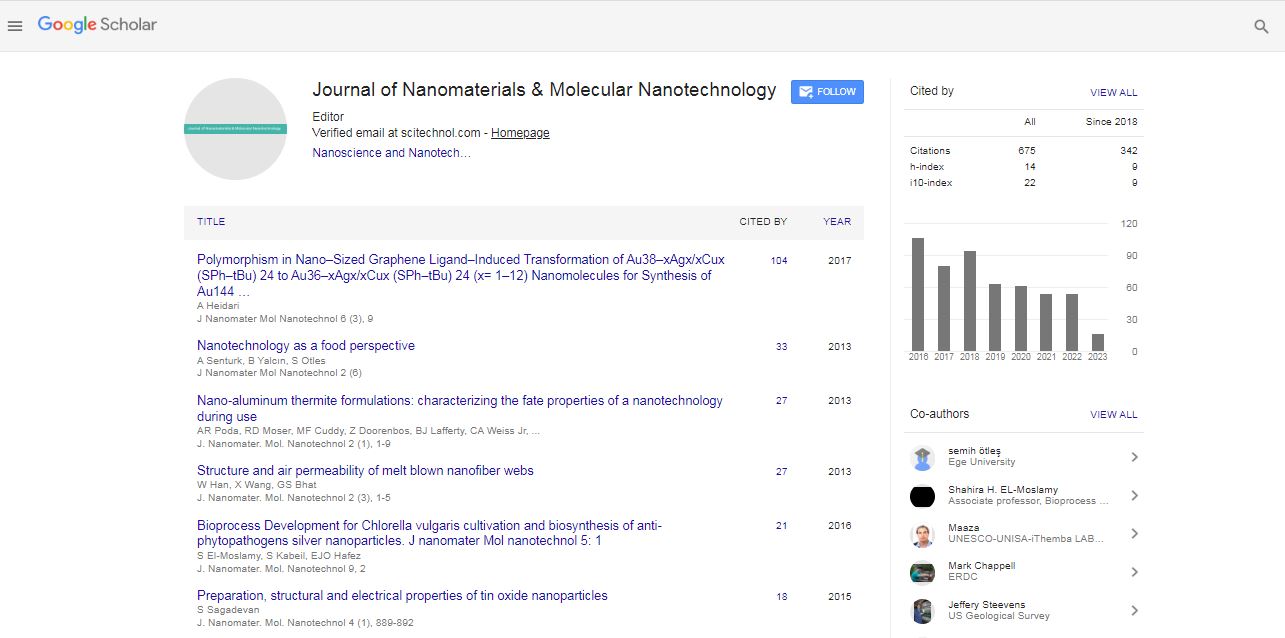Gas phase synthesis of nanoparticles: Challenges and opportunities
Y Huttel, L Martinez and A Mayoral
Instituto de Ciencia de Materiales de Madrid- CSIC, Spain
Instituto de Nanociencia de Aragón, Spain
: J Nanomater Mol Nanotechnol
Abstract
The increasing demand of pristine nanoparticles in nanotechnology is driving a strong effort in finding new methods and technologies for the synthesis of nanoparticles (NPs). Although the wet chemistry methods are the most popular due to their relative low cost and mass production capacities, the gas phase synthesis of NPs is getting more attention thanks to its specific advantages. This physical method is based on the evaporation of a given material (that could be performed by Laser ablation, evaporation, sputtering, etc.) followed by a controlled aggregation of the produced ions and neutrals in order to produce clusters or nanoparticles. Since the whole process can be performed under well-controlled environment (vacuum or ultra-high vacuum) the produced nanoparticles have the same chemical composition as the base material that has been evaporated and lack of contaminants. Also the gas phase method produces quite narrow size distributions that can be tuned and even improved by the use of filtering techniques and it produces NPs that are free of ligands or surfactants that can be deposited or embedded directly on surfaces and matrices. This talk will be devoted to magnetron based Ion Cluster Sources (ICS) that have proven to be well-suited for the fabrication of pristine NPs. After a brief review of the ICS, I will address some issues that have limited the use of the ICS in industrial processes and present solutions for the scaling-up of the technology. In particular, through examples I will present the so-called Multiple Ion Cluster Sources (MICS) that has been shown to be very versatile for the production of alloyed and core-shell NPs.
Biography
Y Huttel is Doctor from the University of Paris-Sud, Orsay, France (1995). After his degree, he worked at the Synchrotron LURE, France; at the University of Paris-Sud, France; and at the ICMM-CSIC, Spain. He was also a Postdoctoral Researcher at the Synchrotron of Daresbury Laboratory, UK, before returning to the CSIC at the IMM. He joined the Surfaces, Coatings, and Molecular Astrophysics Department at the ICMM that belongs to the Consejo Superior de Investigaciones Científicas (CSIC), Spain, with a Ramón y Cajal Fellowship. Since 2007, he has been working at the ICMM as a Permanent Scientist and leads the Low- Dimensional Advanced Materials Group. His research focuses on low-dimensional systems including surfaces, interfaces and nanoparticles, as well as XMCD, XPS and nanomagnetism.
Email: huttel@icmm.csic.es
 Spanish
Spanish  Chinese
Chinese  Russian
Russian  German
German  French
French  Japanese
Japanese  Portuguese
Portuguese  Hindi
Hindi 



